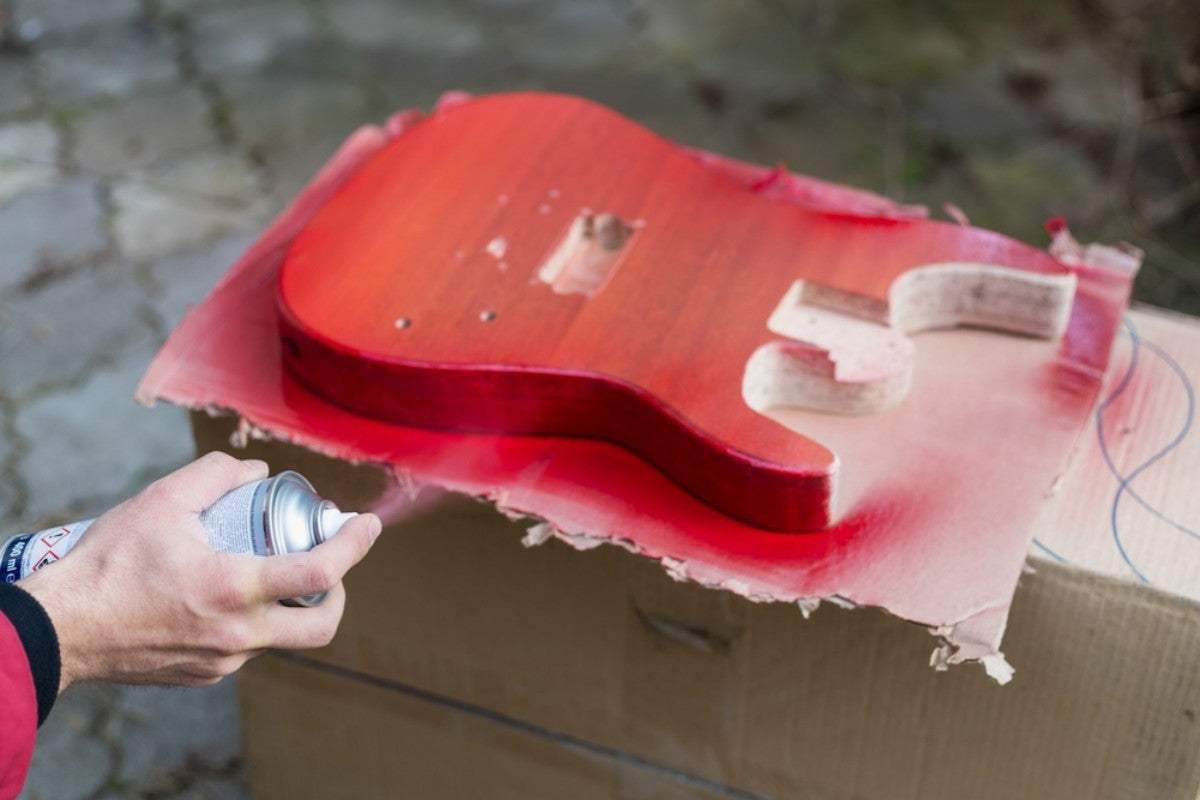I'll start with a quick guitar trivia question...
What do Richie Sambora, Jeff Beck, Joe Perry, John Mayer, Kirk Hammett, Phil Collen, Richard Fortus, and Michael Hampton all have in common?
Answer: they all predominantly or occasionally play guitars with reverse headstocks. “But what about Hendrix? Why wasn’t he on the list?” I hear you cry… well, Hendrix played a standard headstock guitar upside down, which no doubt popularized the look, but it wasn’t actually a reverse headstock.
OK, maybe that question was a bit easy considering the title, so here is a slightly harder one...
Why do these guitar superstars and many others play reverse headstock guitars?
Let's find out…
A standard 6-a-side headstock guitar has the low E string tuning machine closest to the nut, therefore, it is the shortest string in length from the tuning machine to the bridge. Whereas, on a reverse headstock, as the name suggests, the low E string tuning machine is the furthest from the nut, therefore it is the longest in string length from the tuning peg to the bridge.
Therefore, with a reverse headstock, the string elasticity or stretch (not the actual tension as many players believe) in the low strings is increased making them more stable in terms of tuning and not allowing them to flab out. This makes them a great choice if you play 7-string guitars which tend to suffer from low-end stability issues, especially if you use dropped tunings.
At the other end of the neck, the high strings have less elasticity therefore you need to bend them less to achieve accurate bends, making the process a lot easier on the fingers.
Just for reference, as long as two guitars have the same scale length, tuning, and string gauge, the tension on each string will be the same regardless of whether it has a traditional or reverse neck. The elasticity, stretch, and feel will be different, but the actual tension will be the same.
The Advantages of Reverse Headstock Guitars
Generally, most guitarists find strat and tele-style guitars that have a reverse headstock easier to play than ones with a standard headstock after they have become accustomed to the change in the elasticity of the strings. This is predominantly because harder full tone and tone-and-a-half bends are easier to play and get perfectly in tune.
Guitars with the shorter 24-inch scale can also benefit from being fitted with a reverse headstock if the player likes using thinner gauge strings. Using a set of 9-42s on shorter-scale guitars can cause the thicker strings to rattle a little. However, fitting a reverse headstock will create more elasticity on the low E and A strings therefore eliminating the rattle.
If you use your tremolo arm extensively and have slight issues with the guitar returning to perfect tuning after some heavy usage, swopping to a reverse headstock could well solve the problem. The increased stability of the low-end strings could be just what you need to go crazy with the tremolo arm but just about stay in perfect tuning afterward.
The Tonal Differences of Reverse Headstock Guitars
I’m a great believer in the fact that a guitar's design and everything on the guitar has some effect on its tone. Obviously the wood and the pickups make much more of a tonal difference than what material the volume and tone knobs are made of. But the overall design and every individual part will have a major or subtle effect on the tone, including a reverse headstock.
In an interview Richard Fortus did with Forbes magazine about his signature Paoletti reverse headstock guitar, he mentioned that the headstock design gave the guitar a more piano like and deeper sound due to the increased tension on the lower strings. He also much preferred the lower tension on the higher strings making them easier to bend.
Richard also mentioned that due to the fact that Hendrix played an upside-down strat, the sound he was hearing and the way the strings felt underneath his fingers was the same as a strat with a reverse headstock. Therefore, if you want to recreate Hendrix’s classic tone a reverse headstock is the way to go.
I wholeheartedly agree, reverse headstock guitars have a more solid low end than those with a standard headstock, but I don’t think there is as much of a difference in the tone of the higher strings.
If you want to read the whole interview with Richard Fortus, then click HERE.
Stringing A Reverse Headstock Guitar
The order in which you put on new strings isn’t important, but as with a normal headstock guitar, it is advisable to start with the low E string. However, remember that for a reverse headstock, the string needs to be wound in the opposite direction to what you’re probably used to. This can take a little bit of getting used to for standard Fender headstock players but is easier for those who play 3-a-side headstock guitars because every string on a reverse headstock is wound in the same way as the bottom three strings on a 3-a-side headstock.
Standard Headstock vs Reverse Headstock
The major difference between standard headstocks and reverse headstocks (apart from the way they look) is the elasticity of the strings and how they bend relative to one another, as explained above.
Wrapping it Up
There is a reason why the guitar superstars mentioned in the introduction play guitars with reverse headstocks - they prefer the feel under their fingers, as well as probably liking the look.
So, if you've never played one, give it a try, but remember it does take a little time to get used to the way they play because of the more stable low end and less elastic high end. Some guitarists love them, some much prefer the more traditional headstock design, but the only way to find out if a reverse headstock is for you is to get yourself down to the local guitar store and try one out.




